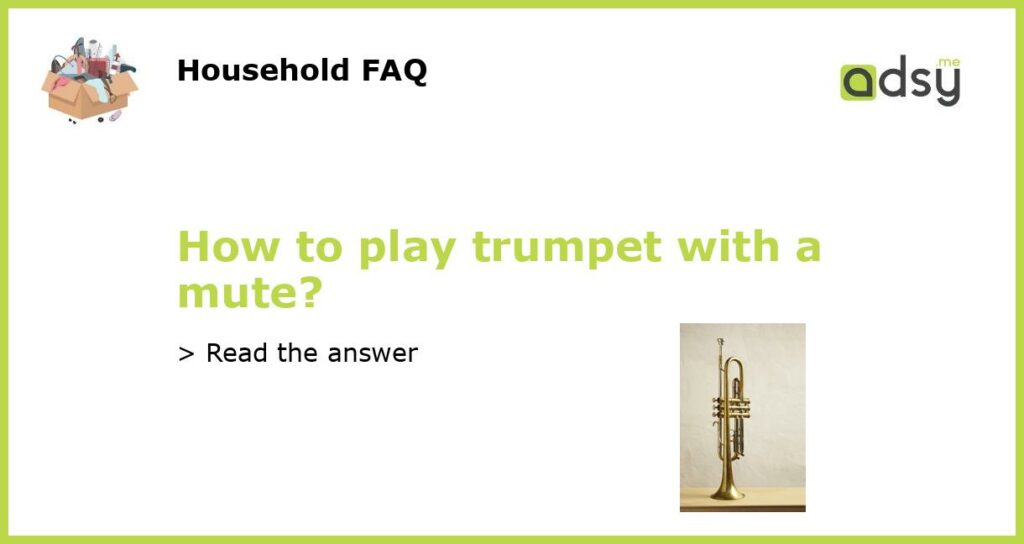Understanding Trumpet Mutes
Before we dive into how to play trumpet with a mute, it’s essential to understand what a trumpet mute is and why trumpet players use them. A trumpet mute is a small device that alters the sound that a trumpet produces. It is inserted into the bell of the horn and can produce a wide range of sound effects, from a quieter sound to a distorted, growling sound.
There are several types of mutes used with the trumpet, including the straight mute, cup mute, harmon mute, and plunger mute. Each one produces its unique sound, making the trumpet an incredibly versatile instrument in the hands of a skilled player.
Preparing to Play with a Mute
When playing with a mute, it’s essential to prepare the instrument beforehand. Inserting the mute into the bell can be a bit tricky, and it’s easy to damage the trumpet if you’re not careful. Start by loosening the tuning slide to make it a bit easier to insert the mute.
Then, holding the trumpet horizontally, carefully insert the mute into the bell, twisting it slightly as you do so. Ensure that it’s securely inserted before playing, as an improperly inserted mute can fall out during playing and cause damage to the horn.
Adjusting Your Playing Technique
Playing with a mute requires a few adjustments to your playing technique to ensure that you get the best possible sound. Firstly, it’s essential to be aware that playing with a mute requires more effort than playing without one. The mute restricts the airflow, making it harder to produce a sound. Increasing the amount of air you use can help compensate for this.
Another crucial technique when playing with a mute is to adjust your embouchure. The mute alters the sound of the trumpet, making it more difficult to hear the pitches accurately. By adjusting your embouchure, you can ensure that you’re hitting the right notes despite the altered sound.
Experimenting with Different Mutes
There are several different types of mutes available, and each one produces its unique sound. Experimenting with different mutes can help you find the one that best suits your playing style and the sound you’re trying to achieve.
For example, the cup mute produces a mellow, muted sound, making it ideal for slow ballads or jazz music. On the other hand, the harmon mute produces a distinct, growling sound, making it perfect for blues music. By experimenting with different mutes, you can find the perfect sound for your playing style.
Practice, Practice, Practice
Finally, playing with a mute requires practice to master. It’s essential to incorporate mute playing into your practice routine, dedicating some time each day to it.
Start by playing simple songs or scales with the mute, gradually working your way up to more complex pieces. Being patient with yourself and consistent with your practice will help you master playing with a mute, opening up a whole new world of sounds and possibilities with your trumpet playing.






